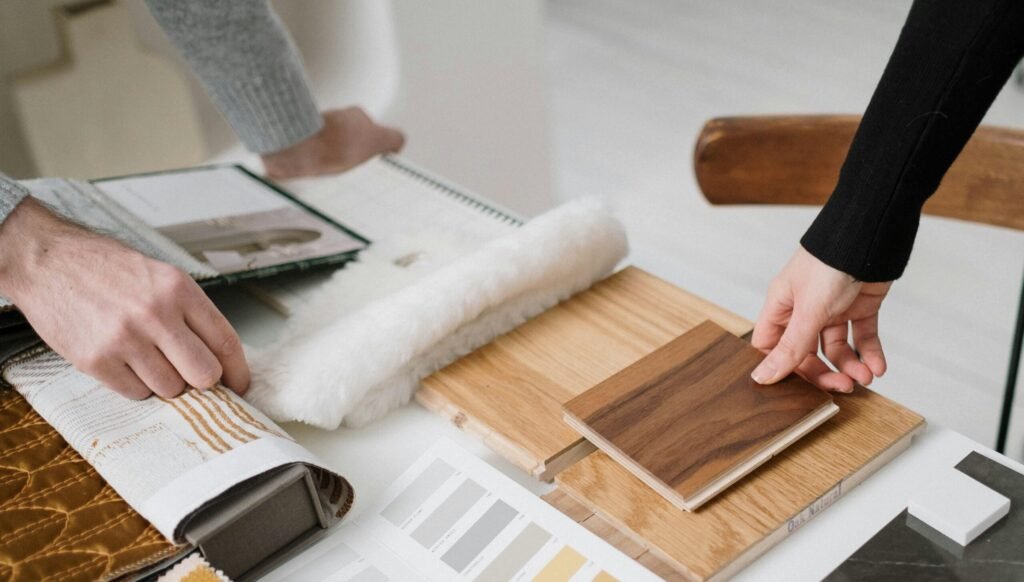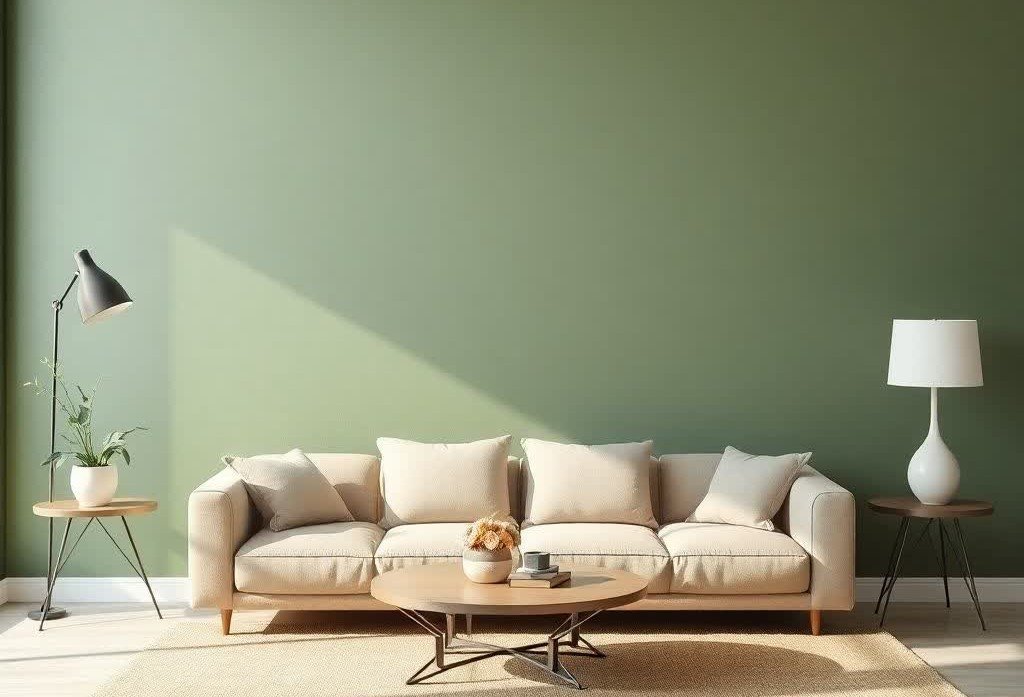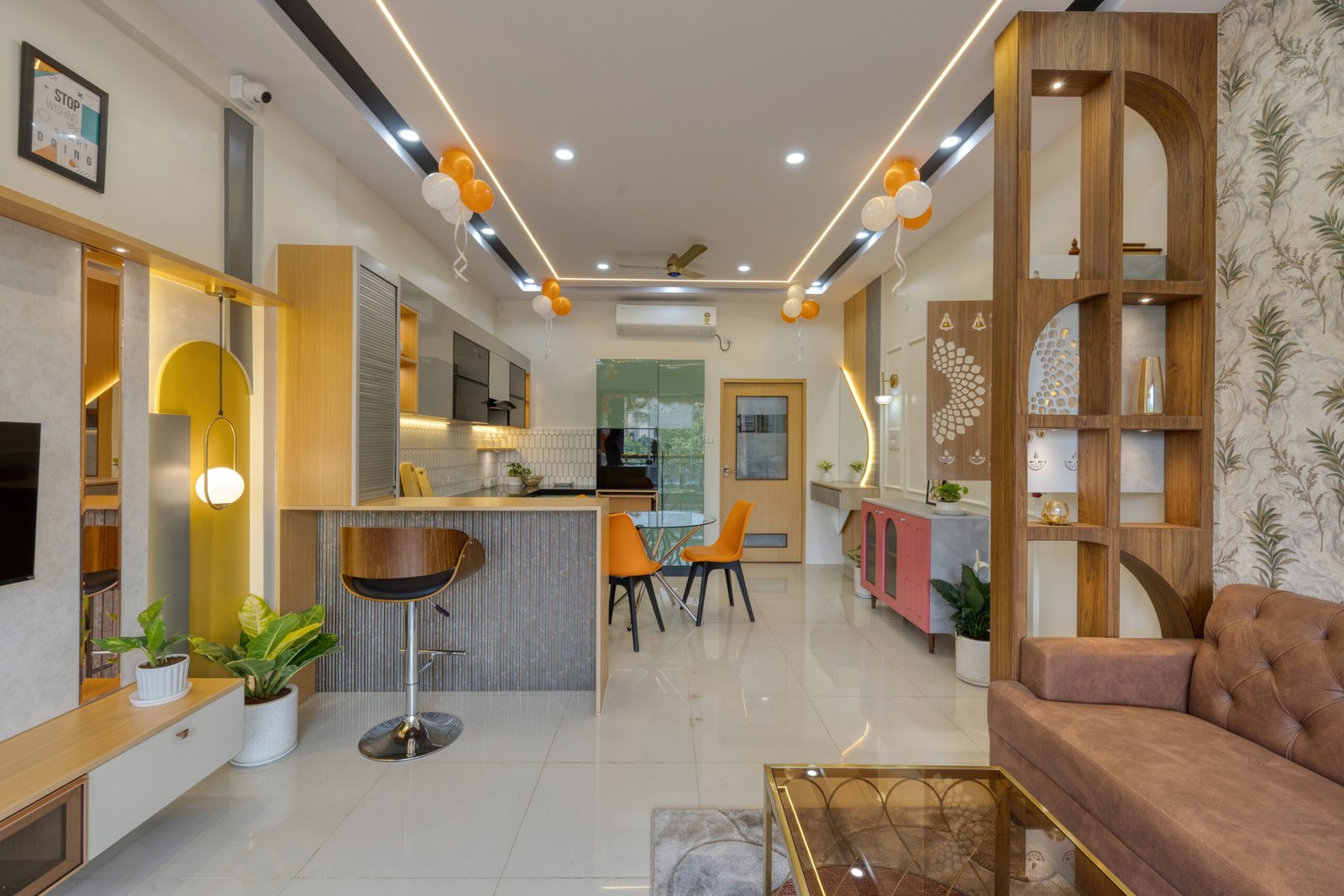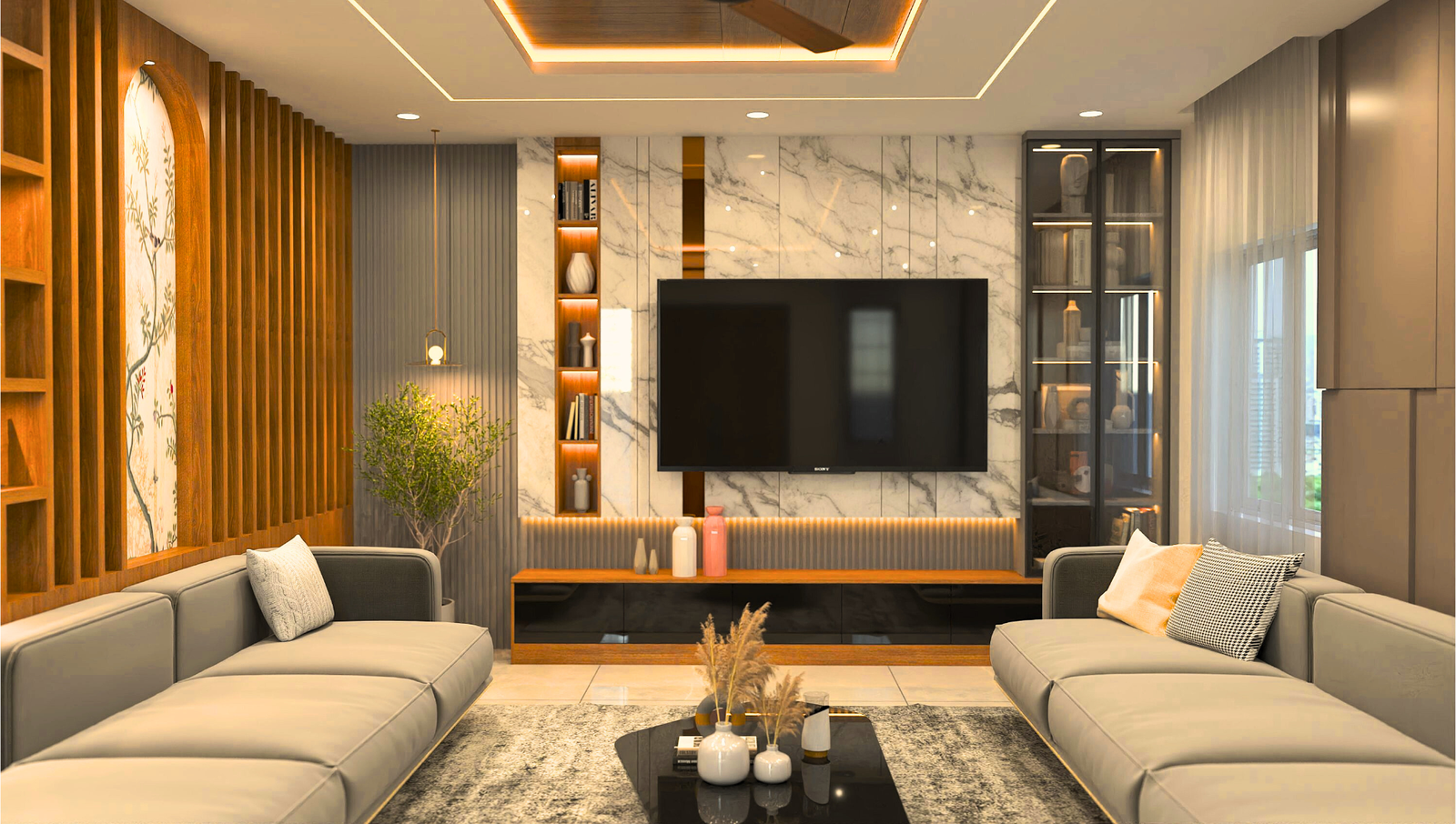
Choose the right materials for your wardrobes and home interiors
Choosing the right materials for your wardrobes and home interiors is a critical step in creating a space that is both aesthetically pleasing and functional. Whether you’re building a new home or renovating, the materials you select will not only impact the look of your interiors but also their durability and maintenance. Here’s a guide to help you make the best material choices for your wardrobes and overall home interior design.
Understand Your Needs
Before diving into material options, it’s important to consider the purpose of each space. Ask yourself:
- How often will the space be used?
- What kind of items will be stored?
- Do you need extra durability or are aesthetics the priority?
For example, wardrobes in children’s rooms may need more durable and easy-to-clean materials, while a walk-in wardrobe in a master bedroom can have more luxurious finishes.
Material Options for Wardrobes
- Plywood: Plywood is a popular choice for wardrobes due to its strength and versatility. It’s made by gluing together thin layers of wood, making it highly durable and resistant to warping. Plywood also works well with laminate or veneer finishes for a sleek, modern look.
- MDF (Medium Density Fiberboard): MDF is an engineered wood product that’s affordable and easy to work with. It’s smooth and consistent, making it ideal for painted finishes. However, it’s not as strong as plywood and may not be suitable for heavy-duty wardrobes.
- Solid Wood: If you’re after a natural and timeless look, solid wood is a classic choice. Oak, teak, and walnut are popular options for their rich grains and longevity. Solid wood wardrobes are a premium option but can be more expensive and require regular maintenance to keep them looking their best.
- Laminates and Veneers: For a more cost-effective approach, laminates and veneers are thin layers of material applied over MDF or plywood. Laminates are highly durable, scratch-resistant, and come in a wide range of colors and patterns. Veneers, made from real wood, provide a natural wood look at a lower cost than solid wood.
Materials for Home Interiors
The choice of materials for flooring, walls, and cabinetry plays a huge role in setting the tone of your home. Here are a few commonly used materials:
- Wood: Natural wood adds warmth and character to any space. It’s great for flooring, ceiling beams, and custom furniture. While solid wood is ideal for luxury homes, engineered wood provides a similar look with added durability and affordability.
- Tiles: Ceramic and porcelain tiles are excellent for high-traffic areas such as kitchens, bathrooms, and hallways. They are available in a wide variety of patterns and textures and are highly resistant to water and stains.
- Natural Stone: For a high-end and elegant finish, consider marble, granite, or quartz. These stones are durable and can make a bold statement when used for countertops, flooring, or accent walls. Keep in mind that natural stone requires regular maintenance to retain its shine.
- Glass: Glass can be used creatively in home interiors, particularly for cabinet doors, partition walls, and wardrobes. Frosted or textured glass adds a modern, airy feel to the space while maximizing natural light.
Consider Maintenance and Durability
Each material comes with its own maintenance needs. For instance, natural wood and stone may need regular polishing or sealing, while laminates and MDF are generally low-maintenance. Evaluate how much upkeep you are willing to invest in, especially for high-traffic areas like kitchens and living rooms.
- Moisture Resistance: For areas like bathrooms or kitchens, opt for materials that resist moisture, such as marine-grade plywood, tiles, or acrylic finishes.
- Scratch and Stain Resistance: In homes with children or pets, materials that are scratch-resistant and easy to clean, like laminates or tiles, can save you a lot of headaches in the long run.
Aesthetic Appeal
The look and feel of the material play a huge role in the overall aesthetic of your home. While solid wood creates a rustic, classic vibe, high-gloss laminates or acrylic finishes give off a more contemporary and modern feel. Neutral colors can create a calm and timeless space, while bold textures and colors can add character and personality to your design.
Budget Considerations
Your budget will play a major role in deciding the materials you can choose for your home interiors. Engineered products like MDF and laminates offer cost-effective solutions without compromising on style, while premium materials like solid wood or natural stone come with higher price tags. Always try to strike a balance between quality, aesthetics, and cost, prioritizing materials that provide long-term value.
Eco-Friendly Options
If sustainability is a priority, look for eco-friendly materials like reclaimed wood, bamboo, or cork. These materials not only have a lower environmental impact but also add unique charm to your interiors. Ensure that any wood products you choose are certified by organizations like FSC (Forest Stewardship Council) to ensure responsible sourcing.
Expert Consultation
Working with a professional interior designer or contractor can help you make the best material choices for your home. They will guide you based on your specific needs, the climate, and the architectural style of your home. Additionally, designers have access to a wider range of materials and finishes that may not be readily available in retail stores.
Conclusion
Choosing the best material for your wardrobes and home interiors is about balancing aesthetics, durability, and functionality. By considering your lifestyle, maintenance preferences, and budget, you can select materials that not only enhance the look of your home but also stand the test of time.
Choosing the right materials for wardrobes and home interiors is pivotal in the realm of interior design. The selection of materials significantly influences various aspects of aesthetics, functionality, durability, and maintenance. Each material possesses unique characteristics that can either enhance or detract from the overall design of a space.
Aesthetically, materials contribute to the visual appeal of interiors. For instance, natural woods can impart a warm and inviting atmosphere, while metals and glass may create a sleek and modern look. The interplay of different materials can also influence the light dynamics within a room, potentially affecting the perceived size and ambiance of the space. As a result, the right material choices directly impact the enjoyment and satisfaction a homeowner derives from their surroundings.
Functionality is another crucial consideration in material selection. Different materials offer varying degrees of utility and suitability for specific applications. For example, water-resistant materials such as laminate or polymer are often preferred in kitchen and bathroom wardrobes, where exposure to moisture is a concern. Understanding the primary functions required of materials ensures that each component of home interiors not only serves its intended purpose but also withstands the rigors of day-to-day life.
Durability is closely linked to material quality. High-quality materials tend to have a longer lifespan, reducing the need for frequent replacements or repairs, which in turn affects long-term costs. Additionally, maintenance requirements differ among materials; while some may necessitate regular upkeep, others can provide a more hassle-free experience.
Ultimately, the choices made in material selection can significantly influence not only the immediate living experience but also the home’s resale value. A well-designed interior utilizing high-quality materials is likely to be more appealing to potential buyers, suggesting that careful consideration of materials is a wise investment for both aesthetic and practical reasons.








